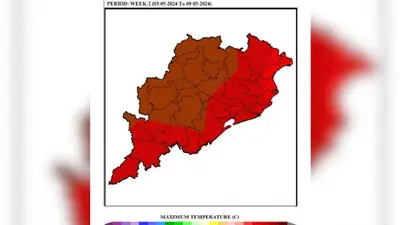Recommended Stories
The nesting process would go on for two months more and there is every likelihood that more nesting spots would be sighted in the coming days, said wildlife officials.
On the other hand, the reptiles are showing visible signs of turning violent over acts of human interference into their nesting corridors.
``The crocodiles are found turning restive during nesting period and human interference near the nests invites their wrath. Mother crocs maintain vigil near the nest and the reptiles retaliate and pounce on human trespassers,`` said Manoj Kumar Mahapatra, Divisional Forest Officer, Rajnagar Mangrove (Wildlife) Forest Division.
At present the national park is out of bounds for the tourists and visitors in view of the croc-nesting season.
Since May 15, prohibition has been imposed and it would remain effective till July 31 after the completion of annual breeding activity of these animals.
But the settlers of villages very close to the national park often intrude into the croc-infested water bodies inviting danger for themselves, DFO Mahapatra said.
``This year two human deaths due to crocodile attack have been reported. Since the start of reptiles? breeding season, we have also received two official reports of rocodiles attacking locals near Khola and Gupti creeks within the Bhitarkanika National Park,`` he said. MORE PTI CORR SKN MD AMD
The DFO said there were three other similar incidents, though unconfirmed. The victims were either fishing or collecting crabs from the water bodies within the national park.
Human activity of this nature is prohibited within the 145 square-kilometre park area. Thus the offenders injured by the crocs are not going to be covered under compensation package earmarked for animal attack victims.
The nesting sites were sighted by the wildlife enumerators of the forest department along the innumerable nullahs, creeks and water inlets in the Bhitarkanika river system, an ideal habitat for saltwater crocodiles, sources said.
The figure on the number of nests might further increase as the counting process of the estuarine nests was continuing.
Last year 56 nesting sites had been spotted. More sighting of croc nesting sites is expected in the coming days.
Female crocs lay around 50 to 60 eggs and the hatchlings usually emerge from the nest after an incubation period of 70 to 80 days. An estimated 700 crocodile hatchlings were sighted emerging from the nesting sites last year.
Wildlife staff are maintaining vigil on the nesting sites so that crocodile eggs were not devoured by predators like snakes, wild jackals and wild dogs found abundantly in the mangrove forest.
Utmost care is being taken so that crocs are not disturbed. As per the latest census, the number of saltwater crocodiles, which are not found in any river system, stood at 1,654, said a senior official.












